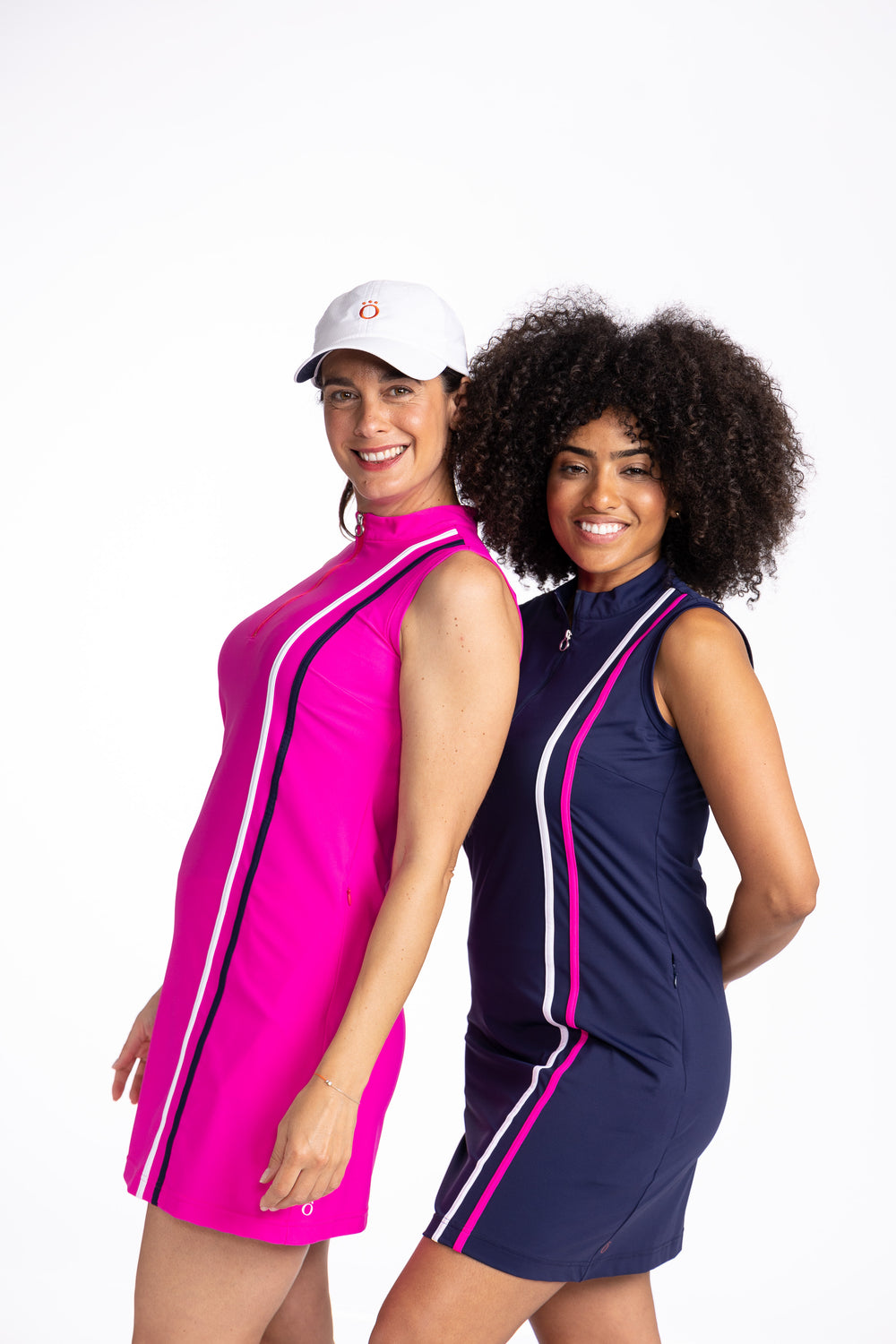Women’s Golf Is Changing Course: Equality and Gender Bias Survey Results
If you’re a woman in golf, chances are you’ve experienced gender bias in the game.
So have we.
That’s why we started KINONA. We realized the demographics of the game were shifting, and we, as a women-led, women-inspired golf apparel company, wanted to be a player in that evolution of the game.
We’ve had our own experiences of feeling left out in the sport, of being treated as less than and apart from our male counterparts. Which isn’t a difficult thing to feel when courses and clubs have literally been excluding us until the not-so-distant past ( We’re looking at you, Pine Valley).
We don’t merely see ourselves and our business as changing the women’s golf apparel industry. We want to stand as a powerhouse in the arena of advancing women in golf and women in all sports. To use our clothing company as a platform to advance and elevate women in the game and on the green.
With this mission in mind, we have undertaken for a second year, the KINONA Women in Golf Equality Index, a survey of 1,044 U.S. adults aged 18+ to examine and track the evolving perspectives towards golf and women’s place in the game. Read the full study here.
The study revealed some pretty interesting insights.
#1: Gender Bias in Golf: It’s Not Just In Your Head, Ladies
| Both men and women alike perceive gender bias in golf. | |
| One female golfer from New Jersey shares, Key Statistics:
|
#2: Gender Bias in Golf: It’s Not Only Your Club, Either
Gender Bias in Women’s Golf is Industry-Wide.
According to one female golfer from Pennsylvania,
Consider this: In 2022, a total of 10 out of 34 official LPGA Tour events were aired on broadcast TV compared to the PGA’s 35 out of 45 events. While this is a 5 fold increase (only 2 LPGA events aired in 2021), it’s still an indication of a more systemic disparity that still exists in the sport.
Key Statistics:
- 30% of official LPGA Tour events were broadcast in 2022 compared to 78% of PGA Tour Events.
- 82% of respondents agree that women should have the same amount of prize money and sponsorships as men in golf.
#3: Women’s Golf is Changing Course
There’s a call for equal visibility and treatment for women golfers. The data supports a shift toward equality in women’s golf and we’re glad to see it. The next generation is driving the change. When asked whether women golfers played better than their male counterparts, our survey results show that the younger generations think so, increasingly.
Key Statistics:
- This year, only 1 in 5 of Americans believe golf is a man’s sport, down from 1 in 4 in 2021.
- Do Women Golfers Play Better Than Men?
54% Gen Z | 42% Millennials | 27% Gen X | 20% Baby Boomers.
#4: Women’s Golf Shows No Signs of Slowing Down
Women’s Golf is Growing. We are finally seeing the game acknowledge and respond to these shifting trends. More women are inviting their friends and supporting girls to take an interest in golf. As sportscaster Kathryn Tappen notes,
Key Statistics:
- 25% of U.S. adults plan to play golf at a course in the years to come.
- 25% of golfers in 2021 are women according to the National Golf Association
- 50% agreed they would watch more women’s golf if there was more buzz and publicity, including nearly 70% of women who have played golf within the past 3 years.
#5: Women’s Golf Fashion: Step It Up to Keep UpThe majority believes that golf dress codes are outdated. Five years ago, the LPGA released its updated dress code, one that received much backlash as sexist and unfair. As players shift to more fashionable and casual wear, we were curious to see if the data aligned with this reaction. Key Statistics:
KINONA is committed to making golf more accessible and fun for all women by bringing chic, contemporary, and functional fashion to the fairway. In the words of Lizzo: “It’s About Damn Time”! |
Play Your Game, Your Way
Our course-tested styles, made with Italian fabrics, sun protection, and signature features like tee holders and back pockets, shift the paradigm of “appropriate golf attire” and inspire women to play their game, their way.
We look forward to seeing the game we love even more equalized. Stay tuned for our next annual Survey!
Join the wave of change in women’s sport by choosing category-redefining apparel from KINONA.
Inspired to get started with golf? Check out our tips to make your first round of golf less intimidating.
Survey Methodology
The second annual KINONA Women in Golf Equality Index findings are sourced from an online Xcelerant survey conducted by Directions Research in April of 2022 and commissioned by KINONA. The survey was conducted April 13-14 and April 16, 2022 and distributed to a sample of 1,044 U.S. adults 18 years of age and older, with a 95% confidence level.





